Bass fishing is one of the most popular sports in the United States, and for good reason. These aggressive predators are found in nearly every state, put up a great fight, and can be caught using a variety of techniques. After years of fishing in bass tournaments throughout Pennsylvania and New Jersey, I have learned that successful bass fishing depends on understanding their behavior and adapting your approach to different conditions.
In this article, I will share what I’ve learned about catching bass throughout the seasons, the most effective techniques, and how to select the right lures for specific situations.

Understanding Bass Behavior
Bass are opportunistic predators with behavior that changes dramatically based on seasons, water temperature, and time of day. Understanding these patterns is crucial to consistently catching bass.
What Attracts Bass?
In my experience, bass are primarily sight predators. When a bass can see a lure or bait, there’s the highest chance it will strike. Their lateral line (a sensory organ running along their sides) is their second most important feeding tool, allowing them to detect vibrations in the water from about 20 feet away. This is why vibrating lures work so well, especially in low visibility conditions.
While less important than sight and vibration, scent can make a difference, particularly on tough fishing days when bass are being finicky. When I’m struggling to get bites, adding scent to my lures has often turned a slow day into a productive one.
Bass Feeding Patterns
Bass are opportunistic predators that will eat almost anything they can fit in their mouths. Big bass commonly feed on:
- Baitfish (shad, shiners, perch, bluegill)
- Crayfish (especially smallmouth bass)
- Frogs and other amphibians
- Insects and worms
- Even small mammals and birds that fall into the water
Juvenile bass typically feed on smaller prey like aquatic insects, flying insects, crustaceans, worms, and tadpoles.
Bass Fishing Techniques
After years of tournament fishing, I’ve found that mastering several different techniques is essential. Here are the most effective approaches I use:
Soft Plastic Fishing
The most common and often most productive bass fishing method is using soft plastics including worms, creature baits, crayfish, tubes, and lizards. These can be fished in several ways:
- Weightless: The bait sinks slowly to appear as an easy meal for bass. This works best in water less than 6 feet deep.
- Texas-Rigged: Using an offset hook with the point buried in the plastic makes it weedless for fishing in cover.
- Carolina-Rigged: With weight pegged 1-2 feet above the bait, allowing it to float off the bottom.
- Jig Heads: For more direct control of the bait’s movement.
When fishing soft plastics, I’ve learned that patience and stealth are crucial. Approach fishing spots quietly, make gentle casts, and pay attention to the subtle movements of your line that indicate a bite.
Spinner Fishing
The second most common way to fish for bass is with inline spinners and spinnerbaits. This method allows you to cover a large amount of water quickly, which is perfect when bass are actively feeding.
I typically cast perpendicular to the shoreline, especially during spring when bass are enjoying the warmer water in the shallows. Start reeling as soon as the lure hits the water to get the blade spinning, then adjust your retrieve speed to control depth.
Spinners have an advantage over soft plastics when bass are aggressive because you can efficiently search for active fish. They’re also great for teaching kids since the bite is easy to feel and the hook set is straightforward.
Topwater Fishing
There’s nothing more exciting in bass fishing than a topwater strike. Bass topwater baits include poppers, jitterbugs, buzz baits, chatterbaits, and frogs. These work best in low light conditions (dawn, dusk, or overcast days) or when bass are actively feeding.
When fishing topwater, I’ve found that timing is everything. During the day, focus on shaded areas or heavy cover. At dusk, bass become more active on the surface as nocturnal creatures like frogs and mice become active. When fishing at these transition times, work the bait slowly with pauses between movements.
Crankbait Fishing
Crankbaits are excellent for covering water at different depths. They mimic baitfish and create vibration and flash that trigger reaction strikes from bass. The diving lip determines how deep they’ll run, making them versatile for various water depths.
I prefer using crankbaits around structure like rocky bottoms, ledges, and points. They’re also excellent for locating fish in new waters because you can quickly cover large areas.
Seasonal Bass Fishing Strategies
Understanding how bass behavior changes with the seasons has been crucial to my tournament success.
Spring Bass Fishing
In spring, bass move from deep winter locations to shallow spawning areas as water temperatures rise. This is one of the best times to fish as bass are actively feeding to prepare for spawning.
Pre-spawn bass are often found along the first drop-offs from spawning flats or in staging areas like points and creek channels. They’ll aggressively strike at lures as they pack on calories for the spawn.
During the spawn, bass are protective of their nests and will strike at anything that threatens them. Sight fishing for bedding bass can be productive, though I often practice catch and release during this vulnerable time.
Summer Bass Fishing
Summer presents both challenges and opportunities. As water temperatures rise, bass establish predictable patterns based on oxygen levels and food availability.
Early morning and evening are prime times, as bass move shallow to feed before retreating to deeper, cooler water during the day. I’ve found that baby brush hogs excel in summer, especially around lily pads and other vegetation that provides shade and oxygen.
On bright sunny days, when many anglers struggle, I focus on precise presentations to bass holding tight to cover. Bass won’t travel far to strike baits when it’s sunny, so make sure to drop your bait near every promising spot.
Fall Bass Fishing
Fall can offer some of the year’s best fishing as bass feed heavily to fatten up for winter. Bass follow baitfish schools, so locating baitfish is key during this season.
Crankbaits, spinnerbaits, and umbrella rigs that mimic baitfish schools can be extremely effective in fall. Bass often school up during this time, so when you catch one, it’s worth making multiple casts to the same area.
Winter Bass Fishing
Winter bass fishing requires slowing down. Bass metabolism slows in cold water, making them less likely to chase fast-moving baits.
In winter, I focus on deep structure and use slower presentations with jigs and soft plastics. Fishing during the warmest part of the day can improve your chances, as bass may move shallower as water temperatures rise slightly.
Lure Selection Based on Conditions
Fishing for bass in tournaments and in many different states, I have learned that choosing the right lure for specific conditions is crucial for success.
Soft Plastics for Bass
Baby Brush Hog with Red Specks
Baby brush hogs are 4 inches in length and come with 12 per pack. Brush hogs are the same shape bait but are 6 inches in length and come with 8 per pack. Baby brush hogs come in over 40 different color patterns. My favorite colors are watermelon red, green pumpkin red, Junebug red, and black emerald. I like the baby brush hogs the better than the larger brush hogs for most situations.
Baby brush hogs are my favorite bass lure to use. The key to fishing with Brush Hogs is to be quiet. Very quietly approach an area and then realize that it is all about the “splash” literally. This lure makes an awesome splashing noise and bass come into investigate and find this lure slowly sinking in the water and simply can not resist. Even when bass are being lethargic and not hitting other lures, fish often still bite the baby brush hog.
On bright sunny days, when bass are not biting for most people is when they actually work the best. Cast this lure near Lilly pads, weeds, structure or near ledges. Watermelon red works best on bright days and in clear water. Green pumpkin red is probably the most versatile to work in all conditions. Junebug red works best in stained muddy water in rivers. Black emerald is the best color for low-light and night fishing. Adding scent to the bait is a good idea for night fishing and does not hurt during the day either.
Because baby brush hogs sink slowly they work best in water less than 6 feet deep. Cast it out and keep a very small amount of tension on the line so you can feel when the big bass engulfs the lure. If there is any movement in the line bring the line tight and set the hook! If a bass does not bite while it is initially sinking, it is not likely that bass will bite on the retrieve. Count to ten after the initial splash and then just crank the bait in fast to save fishing time. Obviously, if there is good structure the bait can be paused and twitched to see if a bass will take it during the retrieve.
A 20-pound braided line with a 5-foot 20-pound fluorocarbon leader is recommended. The leader line should be tied to the braided line with a line to line connection called a double uni knot. The heavy line helps when pulling out snags in lily pads and weeds. The braided line is thinner and lighter than mono which allows for further casting. The fluorocarbon makes the fishing line less visible to the fish. When slowly presenting baits to fish having less visible line is important.
When fishing tournaments it is good to have two poles with fluorocarbon leaders and offset hooks tied and ready to fish the Baby Brush Hogs. I like fishing them with conventional spinning reels, not baitcasting reels.
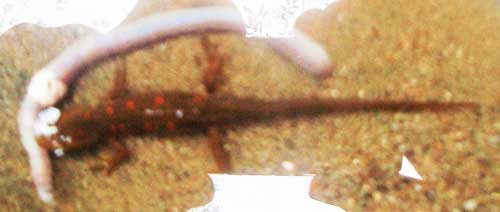
The newt or salamander above was found near a lake in New Jersey. In this case, the newt is eating a worm. Notice the red specs on the back of the newt. This looks very similar to a baby brush hog and the red spots are key.
Offset Hooks for Baby Brush Hogs
Size 3/0 offset hooks work great with baby brush hogs. Size 4/0 works well with the larger brush hogs. The baits are rigged Texas-style onto the offset hook. A bullet weight could be added on the line. However, if you are fishing a weighted bait there are better options on this list. Having the bait aligned straight on the hook is important. When pulling it through the water the bait should not spin.
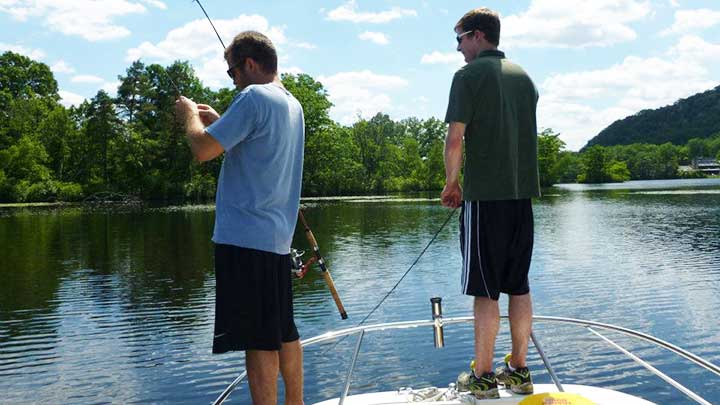
In the picture, my fishing partner Ryan O and I are bass fishing with baby brush hogs. Being patient and slowly working in different areas is very important when fishing these baits.
Zoom Worm Bass Soft Plastic
Zoom trick worms are 6.75 inches long and come with 20 per pack. These worms come in over 50 different color variations. My favorite colors are watermelon red for bright sunny days and clear water. Junebug is a great color for murky rivers and low-light conditions.
My preferred way to fish a trick work is weightless, Texas rigged, and very similar to a brush hog. A trick worm sinks a little faster than a brush hog which can be good in 5 to 7 feet of water. Any water deeper than 7 feet is it good to add a bullet weight against the worm. A Carolina rig with a weighted pegged two feet above the worm is another good option when fishing deeper water.
The greatness of the green trick worm became apparent to me when fishing with my friend Ryan O. We were fishing a big pond, perfect for a spinner, so I thought. The water got deep quickly from the shore and had some grass and deep Lilly-pads. I had an advantage because I would cast in all the good spots first. He would then come and fish the already been fished water and catch one bass after another after another. Sometimes three or four bass from the same small patch of Lilly-pads, it was ridiculous. Even though I got out fished that day, I learned a good technique so I was not complaining.
The best hooks for trick worms as the same offset hooks used with baby brush hogs. If you already like these trick worms then try curly tail worms because they also work great.

In the picture above are bass that were caught for a bass tournament. The boat did not have a live well so we used a large cooler and a fish saver pump aerator. This would keep the bass in good condition. If it is hot out the water does need to be replaced every 30 minutes or the fish could die. This is not ideal but I have fished bass tournaments with small john boats with only an electric trolling motor for power. It does not matter what kind of boat you have it only matters who catches the most fish.
Senko Bass Lure
Yamamoto Senko worms come in sizes 3-inch, 4-inch, 5-inch, 6-inch, and 7-inch. There are over 120 different color variations of the Senko. Two of the best and most popular are green pumpkin red flake and black blue-flake blue tip. Gary Yamamoto designed the Senko in the early 1990s and it has been one of the most popular bass fishing lures ever since.
The Senko is a very versatile soft plastic that has helped countless anglers win bass tournaments The bait is thicker than most reel worms and does not really look like any baits in nature. For some reason, though it triggers bass to bite. It is not one of my favorite baits mostly because it makes too loud of a splash. Properly using a baitcasting reel to slow the bait before it enters the water can avoid this though. I find it is best to use it in water that is more than 5 feet deep. It sinks faster than most soft plastics so it can be fished weightless to a depth around 10 feet of water. It is a good bait to add weight to and fish at deeper depths.
The video below shows more ways than I knew there were to rig a Senko. One of the most popular ways to rig a Senko bait is wacky style. A good way to rig wacky style is with worm o-rigs. One unique method for rigging Senkos included using worms blades to add flash and vibrations.
The video below shows three ways to rig a Senko. These include the weightless Senko, wacky rig Senko and mojo rig Senko. It also shows what those rigs look like underwater.
Spinners for Bass
Mepps Spinner
Mepps spinners come in sizes from number 00 through number 5. For bass, the best sizes are number 3 which is 1/4 ounce, number 4 which is 1/3 ounce and number 5 which is 1/2 ounce. The most common blade colors are silver or gold but actually come in over 20 color variations. The hooks are dressed with a natural squirrel tail.
Mepps spinners are great bass fishing lures for people with low patience. When using spinners there is the constant action of casting and retrieving allowing for large areas of water to be fished quickly. This lure is best for water under 8 feet deep. The slower the spinner is retrieved the more the lure will sink into the water. It is a good idea to start reeling in as soon as the lure hits the water to get the blade spinning. The spinner can then immediately be reeled slower to get it to sink deeper.
Casting perpendicular to the shore is my favorite way to fish for bass with spinners. Fish are on the edges, especially during warm days in the springtime. Bass are enjoying the warmer water in the shallows and often chase down passing baits. Since the water is shallow they do spook easily. Make sure to approach the fishing spots very quietly. From shore, this method works particularly well. Working the way around a pond or lake with a Mepps spinner will typically catch some nice bass.
The advantage this lure has over soft plastics and most other lures is that it covers more water. If bass are feeding aggressively they will hit Mepps spinners! It is also easy to feel the bass bite and set the hook which makes this a great lure for kids. We have been using these spinners since we had the Zebco push-button reels as young kids.
If there are toothy fish in the lake such as pickerel, pike, and musky using this lure can be a problem because these fish love to bite spinners as well. When a toothy fish bites and there is not a steel leader the fishing line can easily be cut. A steel-leader leader might cut down on the number of bass that bite. However, I have caught plenty of bass while using a steel leader.
The bronze Mepps number 5 with a tail is perfect for big bass, especially when casting far in murky water. A silver Mepps number 3 with a tail is my go-to spinner to use in clear water and on sunny days. If you already like using these Mepps spinners give the Mepps Comet Mino a try.
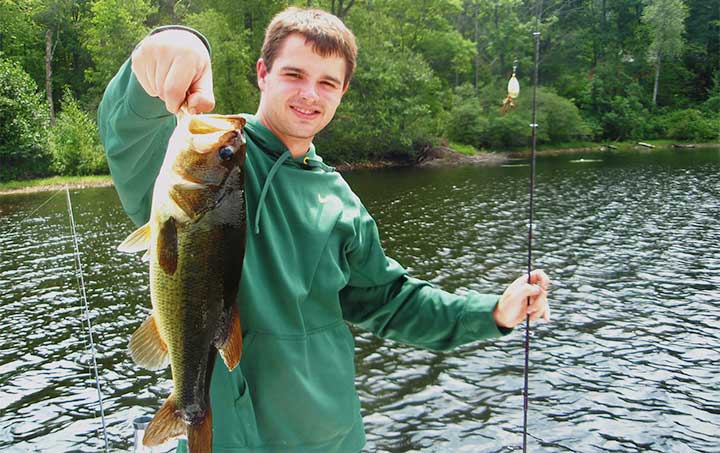
Original Rooster Tail Bass Spinner Bait
The Original Rooster Tail comes in size 1/32 ounce, all the way up to 1-ounce. This is known to be a great lure for catching trout. With the larger sizes and over 100 different color options it also makes an incredible bass lure. Good color options include Mayfly, black, hammered frog, and white. The 1/16 ounce size is perfect for catching small bass in pounds and a 1/2 ounce size is good for casting far in lakes. I have never used the 1-ounce size but it seems like it would be fun to try.

In the picture are my brother Mark and my nephew. A 1/16 ounce white rooster tail was used to catch this little bass in a pound in the early spring.
Jigs for Bass
Crayfish Bass Jig
The Strike King Hack Attack Heavy Cover Jig Bait comes in .375-ounce, .75-ounce, and 1-ounce sizes. Color options include black-blue, blue-craw, candy craw, green pumpkin craw, Okeechobee craw, sexy craw, summer craw, Texas craw, and falcon lake craw. Sexy craw and falcon lake craw are the colors I like best. The Gamakatsu black nickel heavy wire hook is strong and good for pulling hard on big bass.
This is a heavy cover swim jig so travels well horizontally in the water column and also cuts through heavy weeds. The common fishing technique for these jigs is to be drifting over grass beds and pitching the jig about four feet in front of the drift direction. The boat is typically drifting sideways. The lure sinks to the bottom and the bass might bite while it is sinking. If not the jig is pulled 1 to 4 feet of the bottom two or three times before it is retrieved and pitched again. When the jig comes off the bottom the first time be ready to set the hook!
I learned about Crayfish Jigs by watching the competition during bass tournaments. Top ranking teams would use this lure and only this lure all day. Jigging for 4-6 hours does take a lot of effort on the fisherman’s part.
It can take time to locate weed beds that are holding fish. Once the bass holes with fish are found it is worth all the work. Generally, these jigs are used in water that is 6 to 12 feet deep with large patches of sod grass. The thicker the better. Jigging around shoals also works well. The key is knowing where the grass beds, structures, or ledges are located. This is why fishing often and becoming familiar with the lake is important.

The picture above shows a swim jig with a crawfish body. These jigs most resemble a crayfish so that is the soft plastic I typically use for the body.
Green Pumpkin Crawfish Soft Plastic
The Zoom Super Speed Crawfish soft plastic is 3-3/4 inches in length. Good color options include Alabama, black red glitter, green pumpkin, and Junebug. Trim the first two notches off before putting it in the hook and the claws will extend out just past the skirt and flutter great in the water!
Liquid Mayhem Bass Crawfish Scent
Liquid Mayhem Bass Crawfish Scent comes in a 2-ounce tube. The paste contains natural crawfish and enzymes infused with amino acids and stimulants to encourage fish to strike.
Any bass lure works better with a scent but this is especially true for crayfish jigs and tube jigs. The gel-like paste can stay on lures for up to 30 casts. The formula is concentrated so a small amount is all that is needed. Soft plastic works well without scents but adding scent can encourage picky fish to bite and allow them to hold on the bait longer before try to spit it out.
Fish feed based on sight, vibrations felt in their lateral line, and through scent. Many anglers underestimate the importance of scented baits.
Crankbaits for Bass
Rapala Fat Rap Bass Lure
The Fat Rap size 05 crankbait is a 2-inch lure with a deep diving lip. The three common colors for this lure are perch, silver, and firefighter. This is a floating lure that is made out of balsa wood. It is made with super sharp VMC black nickel hooks. Each lure is hand-tuned and tank-testing to ensure they come ready to catch fish.
This exact lure in perch is what my family calls “Mr. Lucky”. We had one lure that single-handily caught multiple mutant size smallmouth bass in Lake Erie when I a kid. Those bass are still the biggest bass I have ever seen caught. To catch them we would actually troll in 20-40 feet of overwater depth. The listed running depth of the lure is 3-5 feet. If you let out about 100 feet of line and troll this lure will dive much deeper than that, probably around 20 feet.
This crankbait has been around a long time and likely inspired most of the others on the market. I like using lures that have a proven track record of catching fish. If you have never fished with Mr. Lucky, I would highly recommend giving this lure a try.

In the picture above my brother and I were fishing in a bass tournament that was about to start. This was in Lake Pymatuning in Pennsylvania.
Chatterbaits
Z-Man Bass Chatterbait Jack Hammer Series
Z-Man chatterbaits come in size 3/8 ounce, 1/2 ounce, and 3/4 ounce. Color options include black-blue, chartreuse-white, clearwater-shade, green pumpkin shade, white, and Hite’s hot craw. The hammer series is the highest quality hand-made chatter baits used by professional anglers. The price is around $18 per bait. Gamakatsu heavy wire flipping hook is used with a double wire trailer keeper that helps prevent soft plastics from sliding on the hook.
These can be fished like a crawfish jig where it is lifted off the bottom and then allowed to flutter back to the bottom. The chatterbait can also be fished with a slow constant retrieve like a spinnerbait. A swimming senko bait tail can be added to create a larger profile and amazing swimming action to the bait. These chatterbaits start vibrating quickly and swim with a side-to-side motion that creates vibrations that the bass can feel with their lateral line. That makes this a good bait in the dark and in low-light situations. Chatterbaits also work well during the day.
In the video below Ronald Martin discusses the best ways to use a chatterbait for bass fishing.
Topwater Frogs and Poppers
LiveTarget Bass Frog Bait
Livetarget frogs come in 1-3/4 inch which is 1/4 ounce, 2-1/4 inch which is 5/8 ounce, and 2-5/8 inch which is 3/4 ounce. Color options for the frog bait include emerald brown, yellow-black, brown-black, green-yellow, tan-brown, white, and fluorescent green-yellow. Hooks are set in a weedless design which makes this lure great for thick lilypad fishing spots.
If you do not have a frog bait in your tackle box I am not sure you classify as a bass fisherman. These baits do not catch as many basses as other lures. However, fishing topwater is about the much-anticipated excitement of watching the bass strike on topwater. Also, bass that are caught on frogs tend to be much large than with other baits. Frogs are topwater baits that work best at dusk but defiantly catch bass during the day as well.
If you are quiet and sneak up on the fishing spot frogs work really well. I have seen real frogs jump into the water and get eaten almost immediately be bass. If possible try and bring the bait into the water from the shore. Make short twitching motions with the bait as if it is a real frog kicking. These short pulses traveling through the water are often what catches the attention of bass and can bring them to the bait from long distances away.
Rebel Popper Bass Lure
The Rebel popper comes in 2-1/2 inch which is 1/4 ounce and 3-inch size which is 1/2 ounce. Color options include bone, bubble gum, foxy momma, foxy shad, rainbow, and Tennesse shade.
I like using topwater poppers best in low-light situations. Most often I use them between sunset and dark. In the evening many nocturnal creatures like frogs, mice, salamanders, insects, and crayfish start to come out of their daytime hiding spots. Bass are use to this activity and like ambushing prey and feed aggressively at dusk. It takes a while for their eyes to adjust to the day so it is important to work the bait slowly. The best way to work a popper at dusk and at night is with a few seconds of pause between each pop or twitch.
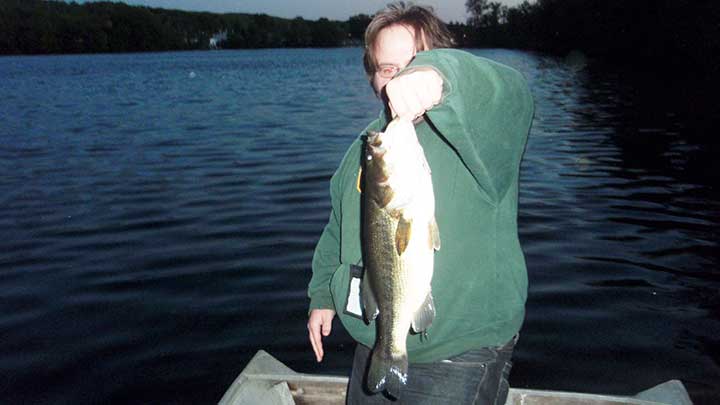
In the picture is my friend Mitch with a nice bass he caught with a Rebel popper right at dusk. He was being very patient with the popper along a rocky ledge and it paid off.
Water Clarity
- Clear Water: Use natural colors (green pumpkin, watermelon) and smaller, more realistic presentations.
- Stained Water: Brighter colors like chartreuse or white become more effective.
- Muddy Water: Dark colors (black, blue) provide better silhouettes, and noisy or vibrating lures help bass locate your offering.
Weather Conditions
- Sunny Days: Bass hold tighter to cover; use precise presentations like Texas-rigged soft plastics.
- Cloudy Days: Bass often roam more actively; covering water with spinnerbaits or crankbaits can be effective.
- Cold Fronts: Bass become more lethargic; slow down your presentation and add scent to entice bites.
Time of Day
- Morning/Evening: Topwater lures shine during these low-light periods.
- Midday: Deeper presentations or fishing heavy cover where bass seek shade.
- Night: Dark-colored surface lures or lures with rattles and vibration work well when visibility is limited.
My Top Lures for Different Scenarios
Through years of fishing, I’ve identified specific lures that consistently produce in certain situations:
For Pressured Bass in Clear Water
Baby brush hogs in watermelon red have been my most reliable producer. The key is quiet presentation – approach areas silently and let the subtle splash of the bait attract bass. Even when bass are lethargic and not hitting other lures, they often still bite the baby brush hog.
For Covering Water Quickly
Mepps spinners allow me to search large areas efficiently. The bronze Mepps #5 with a tail is perfect for big bass in murky water, while a silver Mepps #3 with a tail works great in clear water on sunny days.
For Fishing Deep Structure
Crayfish jigs with green pumpkin soft plastic trailers excel in 6-12 feet of water, especially around weed beds and rocky structure. Adding crawfish scent has noticeably improved my catch rates with these jigs.
For Topwater Action
I’ve had great success with Rebel Poppers at dusk and dawn. When fishing topwater, patience is crucial – allowing several seconds between each pop or twitch often triggers strikes when continuous retrieves fail.
For Night Fishing
Chatterbaits create vibrations that bass can feel with their lateral line, making them excellent choices when visibility is limited. Black-colored lures provide the best silhouette under moonlight.
Bass Fishing Tips from Tournament Experience
The most valuable lessons I’ve learned have come from competing in tournaments:
- Pre-fishing is invaluable: The angler who spends the most time on the water learning bass behavior in the area often wins the tournament.
- Confidence matters: Sometimes the difference between success and failure is the confidence to stick with a technique you believe in, even when it’s not immediately producing.
- Adapt to conditions: Having multiple techniques mastered allows you to adjust when weather or water conditions change.
- Focus on presentation: How you present your lure often matters more than which specific lure you’re using.
- Pay attention to subtle details: Small adjustments in retrieve speed, depth, or lure color can make a huge difference on tough days

In the picture above, Ryan and I are holding bass we caught during a spring bass tournament in New Jersey.
Bass Conservation Practices
As passionate bass anglers, we should be committed to conservation:
- Handle bass carefully, supporting their body horizontally.
- Minimize time out of water for photos.
- Consider using barbless hooks or crimping barbs for easier release.
- During hot weather, ensure proper aeration in livewells during tournaments.
- Release bass in the same area where they were caught when possible.
Frequently Asked Questions
Can you catch bass at night?
Yes, bass feed actively at night. The best time is in early summer during a bright moon. Use dark lures as they provide the highest contrast. Baits that provide scent, vibrations and can be fished slowly are ideal – like surface poppers, chatterbaits, and crankbaits with rattles.
Why do bass fishermen use baitcasters?
Baitcasters allow for better control when casting heavy lures, letting you gently place them in the water rather than splashing. They’re also better for jigging, as the rod eyes face up and the stiffer rod allows for quick torque application. That said, I prefer spinning tackle for many situations, especially when finesse techniques are required.
Does live bait catch bass?
Live bait like minnows, creek chubs, crayfish, and worms are excellent for catching bass. While artificial lures can usually match catch rates of live bait, sometimes nothing beats the real thing. Just be aware that most bass tournaments prohibit live bait.
What is the best bass lure for summer?
In my experience, the baby brush hog excels in summer. By then, lily pads have grown into substantial cover and are great places to find bass. Many anglers struggle to catch bass on bright sunny days in summer, but that’s where the brush hog really shines. Bass don’t travel far to strike baits in sunny conditions, so precise presentation is key.
Captain Cody has worked on charter fishing boats in the Florida Keys, Virgin Islands, and Alaska. Growing up in Pennsylvania Cody has also done extensive freshwater fishing including bass fishing tournaments. Cody strives to provide detailed information about the best fishing gear and tactics to help both novice and experienced anglers have a more productive and enjoyable time on the water. Cody also has a background in aerospace engineering and neuroscience but really only takes pride in being good at one thing and that is fishing!

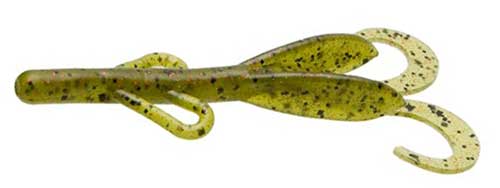

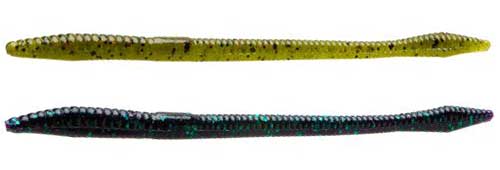

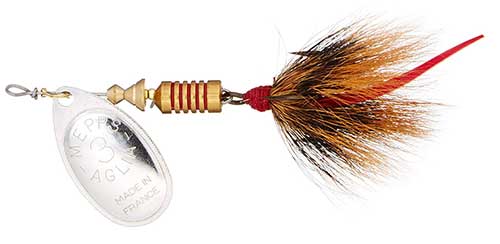
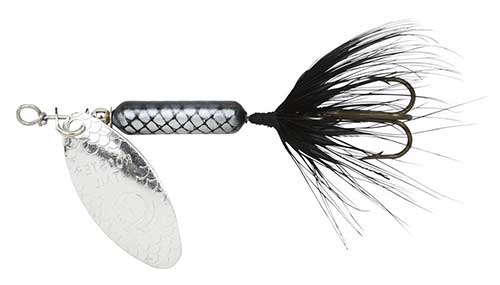
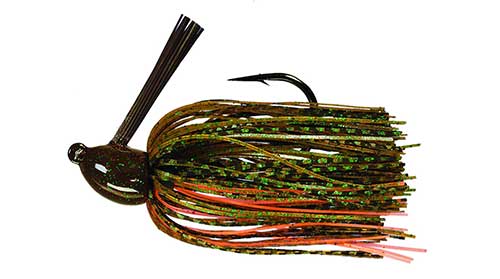
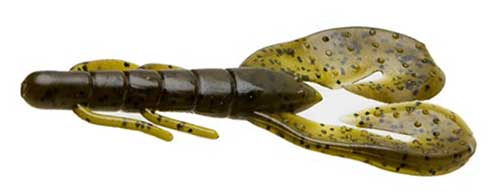
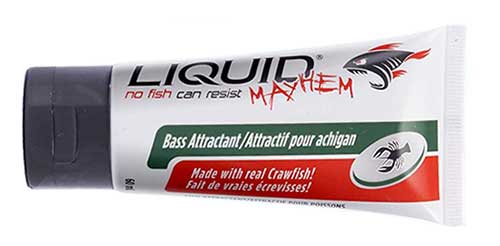
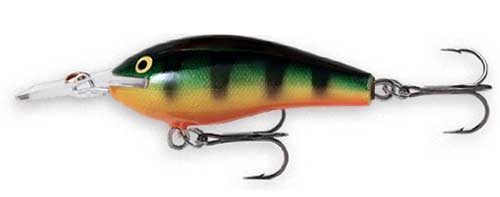

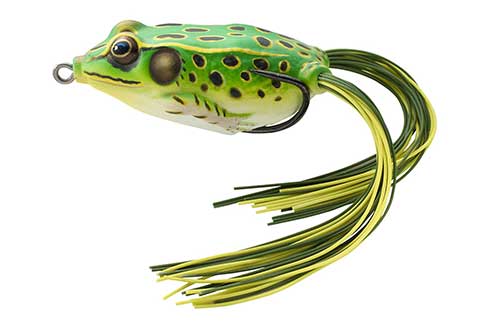
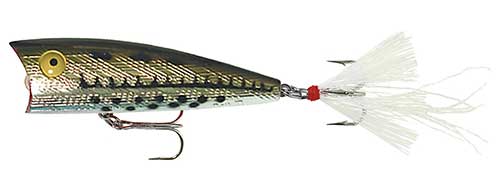

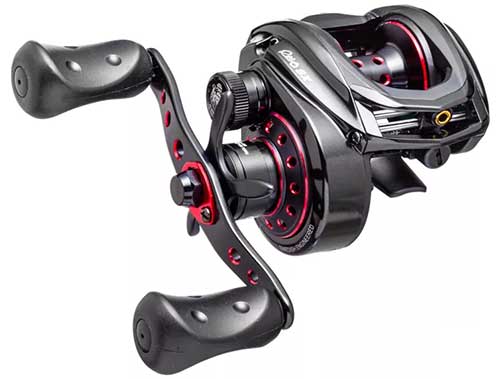
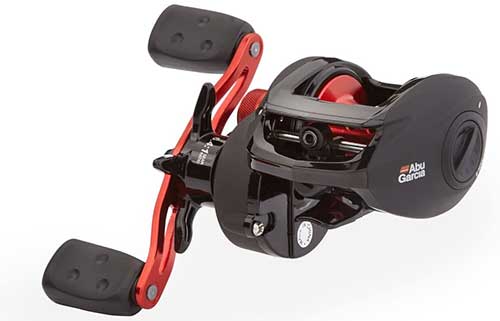
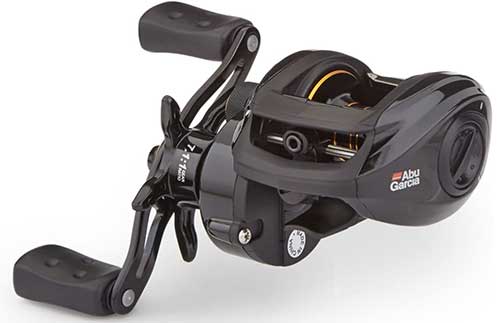
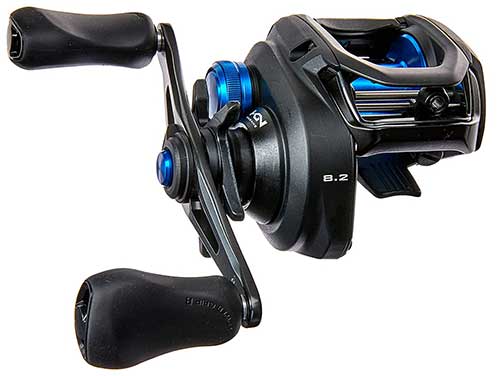



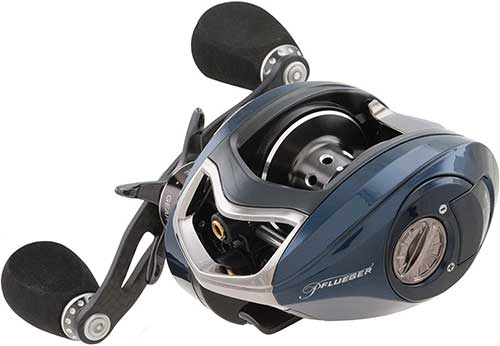


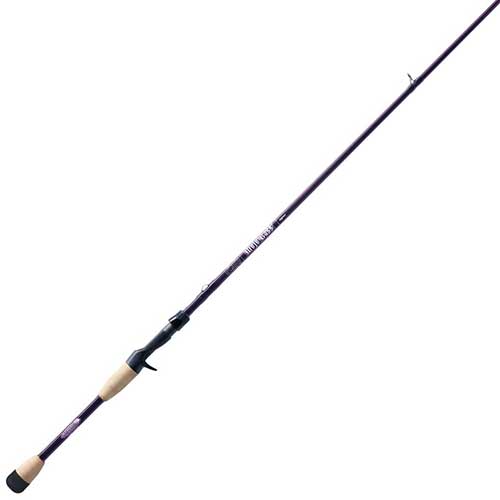

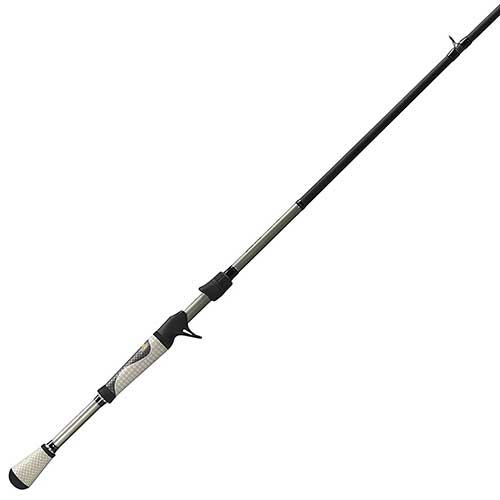
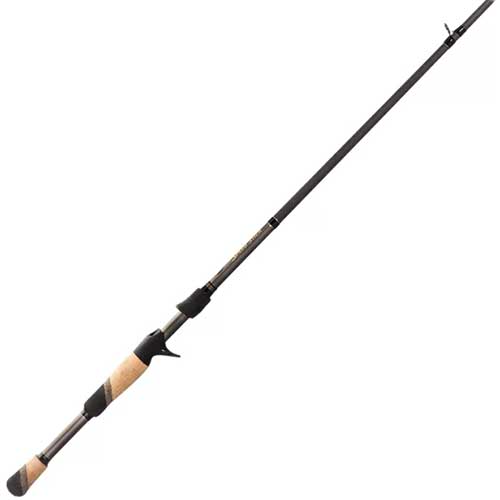

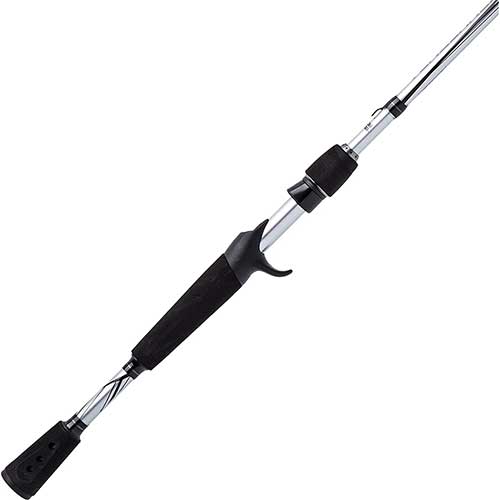


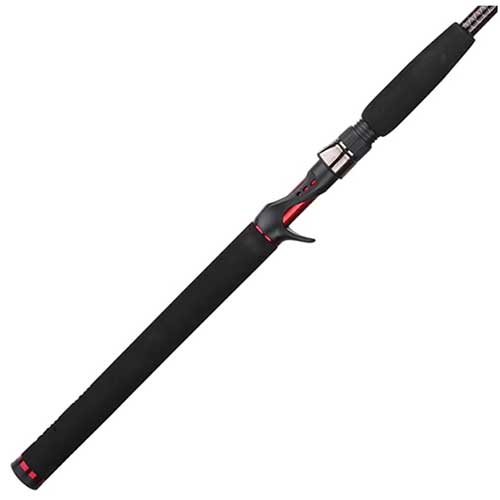
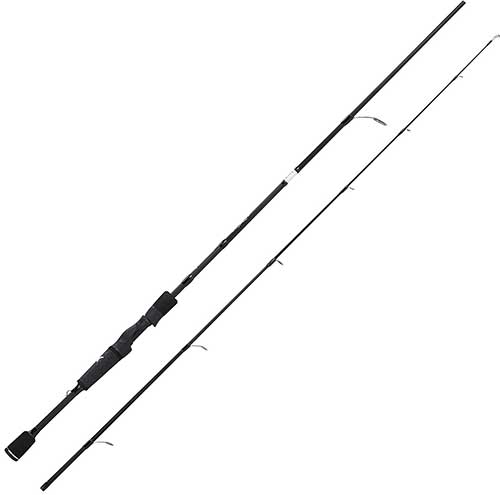
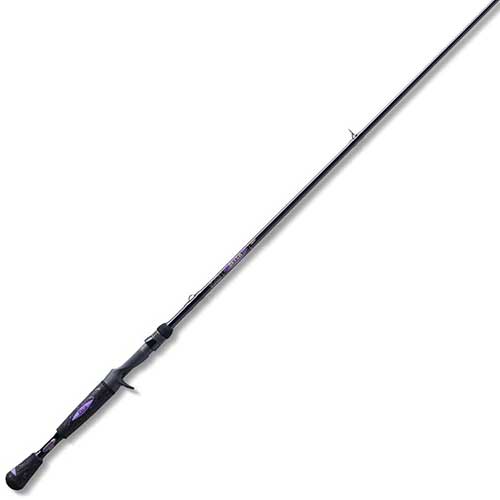
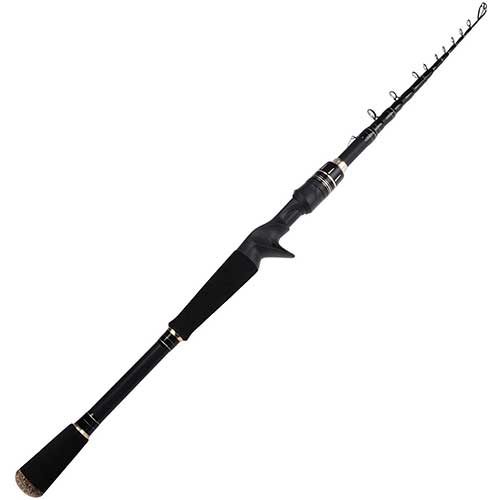
Cody I am very impressed about your knowledge regarding bass fishing and the different lures… I actually learned a lot even though I have not been fishing for many a year. Your grandpa Wabbie and I used to fish several of the Wisconsin lakes probably 50 years ago… It always was a good time.
Nice, sounds like some fun fishing trips!
It is fun fishing!